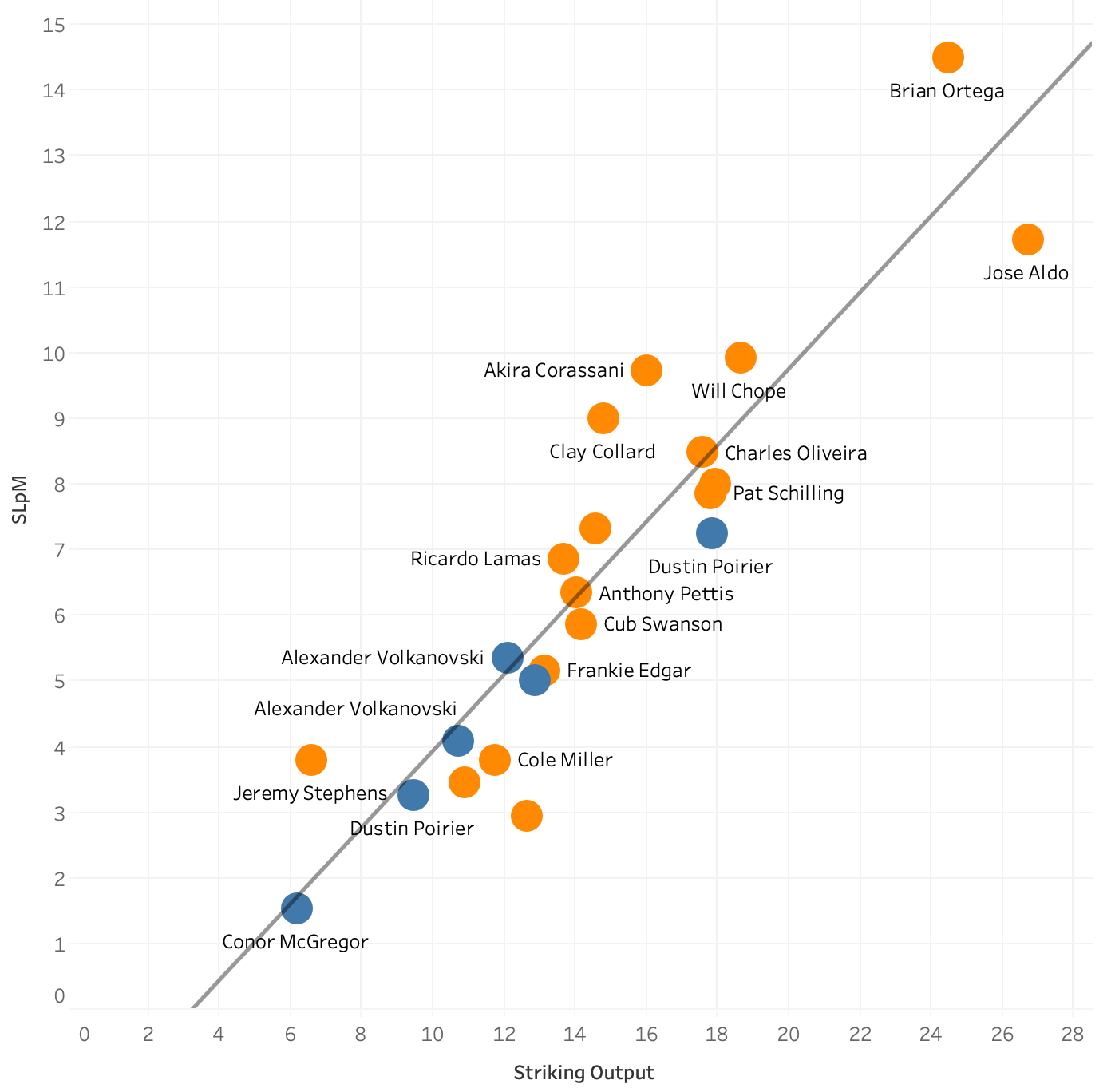Max Holloway is the Archimedes of MMA
In Darren Aronofsky’s 1998 film Pi, Sol explains the story of Archimedes discovering displacement to his protege Max. While entering the bath, Archimedes notices the water rises, which allows him to realize that displacement can be used to measure volume. Following the discovery, he ran naked through the streets yelling “Eureka!”
Max Holloway had a similar discovery early in his MMA career. He realized that striking volume was one of the keys to his success. Since then he has been overwhelming some of the best fighters in the sport with deluges of strikes. His quest to get back to the featherweight title begins this weekend against Calvin Kattar.
Holloway has the third highest Striking Output among all ranked fighters (sig strike attempts / fight time in minutes), 14.52, behind only Jamahal Hill (14.99) and Yan Xiaonan (15.18). When Holloway’s striking output is above 13, he is 13-1. When his striking output falls below 13, he is only 4-5.
Holloway’s ability to land strikes is highly related to his output. As you can see in the chart below, the trend line shows that as his output rises, so does his significant strikes landed per minute (SLpM) rate. This may sound rather obvious. It makes sense that a fighter lands more strikes when they throw more strikes. However, the relationship between landing and throwing is higher in Holloway’s case than for the average fighter.
Each dot on the chart represents a single fight from Holloway’s career and is plotted using his SLpM rate and his striking output in the fight. As you can see, the trend line suggests a strong relationship between the two variables.
In statistics, trend line reliability is measured with something called R-squared. When performing simple linear regression, the closer the R-squared value of the trend line is to one, the better the regression fits the data. If you are not one of the lucky finance bros who scored a custom Patagonia vest before the lockdown, you can get a better understanding of R-squared from this video.
For this exercise, I am only going to use R-squared for comparison purposes, so remember, the closer to one, the stronger the relationship. The trend line for Holloway’s SLpM rate and striking output has an R-squared of 0.83. This not only implies a strong relationship, but also one stronger than the relationship between SLpM and Striking Accuracy (0.53), Striking Defense (0.00) and significant strikes absorbed per minute (0.14).
The R-squared for Holloway’s SLpM and striking output is also above the average for a ranked featherweight. Currently only six of the 16 ranked featherweights (UFC rankings) have higher R-squared for those relationships.
This is all to say, Holloway’s success is intrinsically tied to his volume striking approach. This bodes well for his prospects against Calvin Kattar this weekend. Kattar has allowed his opponents to attempt 13.14 significant strikes per minute, which is the 10th highest rate allowed among ranked fighters. In his eight UFC fights, Kattar has allowed his opponents to land over 13 per minute in six of those fights.






